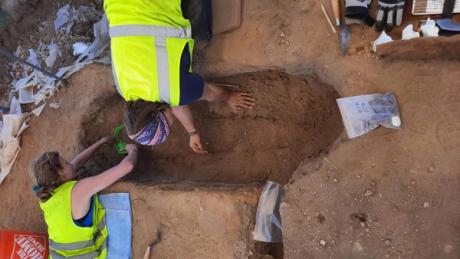
After a year of deliberation, the Netherlands has income the remains of nine people native to Sint Eustatius, a small Dutch Caribbean island also known as Statia. Archaeologists found these bone fragments three decades ago at a dig site at the island’s FD Roosevelt Airport; some of the artifacts date back as far as the 5th century. In a government statementStatia Commissioner Alida Francis said, “Our story is much broader and richer than we even realized, and it’s up to us to tell that story.”
The fragments were excavated from 1984 to 1989 by archaeologist Aad Versteeg on behalf of the Archaeological Center of Leiden State University in the Netherlands and the Archaeological and Anthropological Institute of the Netherlands Antilles in Curaçao. The unearthed material was then sent back to the Netherlands for study, which eventually led to the publication of a 1992 book on pre-Columbian life in the region.
Since March 10, the human remains have been returned to Statia, where the Cultural Heritage Implementation Committee will consult with locals on the proper burial procedure.
“It is imperative that we engage the Statian community as we consider how and where to rebury these human remains in a respectful manner,” Nasha Radjouki, Statia government’s cultural program manager, said in a statement. “The Statian community needs to know that there is more to their story than has been written, and be involved in the new narrative.”
The repatriation of these bone fragments is the first step in a multi-tiered restitution project for the Statian government and the community as a whole; other artifacts from the Dutch excavations, including ceramic and coral boxes, will be returned in late 2023. The island government will then begin the process of recovering a collection of Statian artifacts from William and Mary College in Williamsburg, Virginia.
Statia’s indigenous population, known as the Caribs or Kalinago, lived on the island until the arrival of colonial powers in the 17th century. From the establishment of the first European settlement until the early 1800s, control of the island has shifted 21 times between the Netherlands, Britain and France.
In 2021, excavations in anticipation of a Statia airport expansion project unearthed the cemetery of an 18th-century sugar cane plantation, revealing dozens of skeletons, tobacco pipes and pearls. A 1737 coin depicting George II of England has been found resting on a coffin lid.
